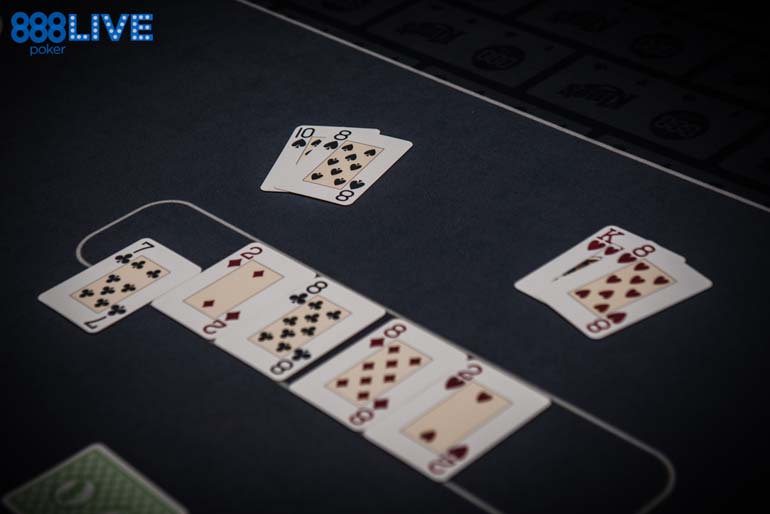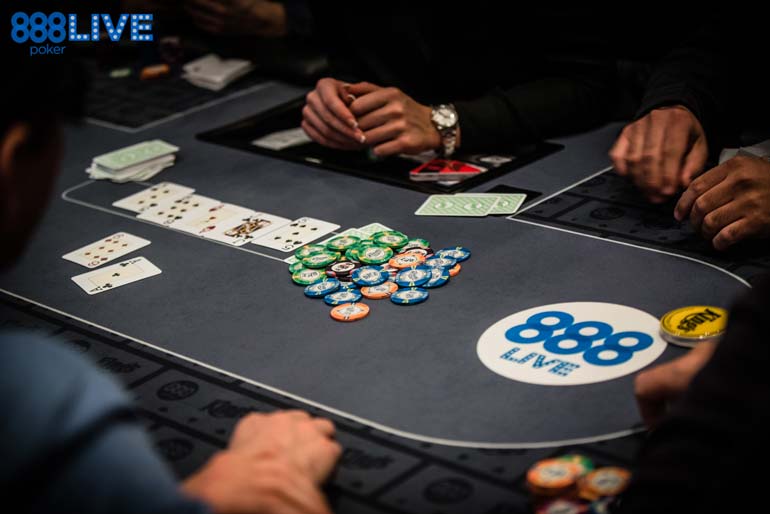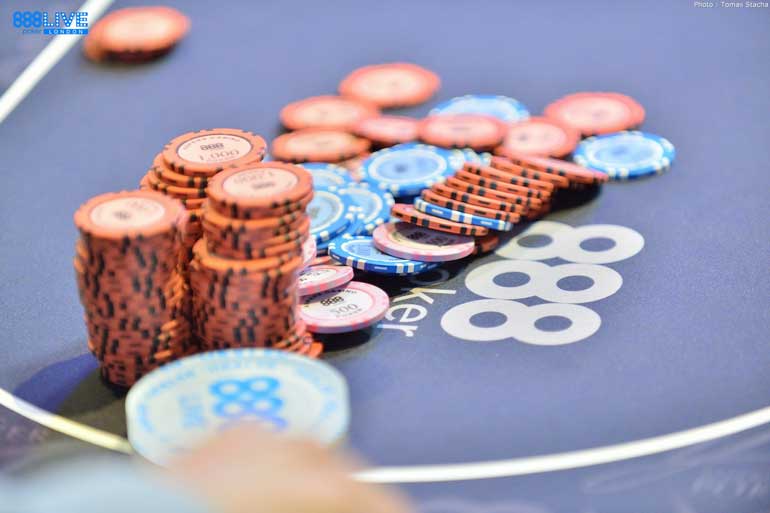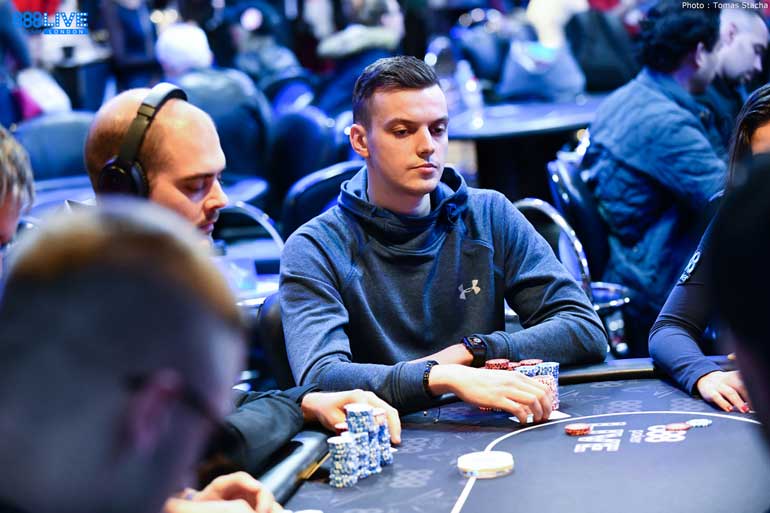There are hundreds of guides out there on how to get started with No-Limit Hold’em. Unfortunately, unless we are complete beginners, many of these guides may be of little use.
What about advanced players looking to find that extra edge? Sometimes it can be hard to know where to focus.
We've specially designed this guide for that purpose. We’ll introduce more advanced poker concepts. Seasoned players will get a list of areas for review when looking for ways to improve their strategy.
Newer players are welcome, of course, but some of these concepts are going to be a little trickier than usual!
We have grouped our advice into four loose categories -
- Consult a preflop solve
- Run a preflop solve
- Run population analysis
- Create a baseline strategy
- Run solver postflop models
- Database analysis
- Networking
- Understand GTO core concepts
- Understand range distributions
- Understand exploitative play core concepts
- Understand the balance freeroll concept
- Understand reverse implied odds
- Understand SPRs and Chunking
Working on Our Game
Consult a Preflop Solve
 Consult a Preflop Solve
Consult a Preflop Solve
Poker games are becoming continually more game theory (GTO) oriented. In the modern era, it’s even possible to generate a complete set of preflop ranges using a GTO solver.
For most of us, generating our own preflop solve is impractical due to the extensive system resources required.
It’s still possible to access solved preflop ranges. Pre-solved ranges are now somewhat commonplace and available for sale on various websites.
Generally, the goal is not to try and follow a preflop solve precisely. But instead, use it to help us refine our strategy and better understand whether we are deviating from a GTO approach.
Why not track down a commercial preflop solve and start comparing your preflop strategy?
Run a Preflop Solve
This option is an extra challenge for the exceptionally dedicated/foolhardy.
Running a preflop solve is a great way to learn about using GTO solvers and understand more accurately how optimal preflop play looks.
- One advantage of running our own solve is that we maintain control over the game tree construction.
- We don’t have to rely on a third party to do this in a way that makes sense.
As hinted at above, ample system resources are required. Think minimum 256GB of RAM but ideally 1TB of RAM or more. (The average system usually has closer to 16GB of RAM).
The game tree solve must be able to fit inside the RAM. (And the game trees become huge when running a preflop solve.)
It’s unlikely that we have this type of system lying around. So, it’s generally necessary to rent computing power from a cloud system. (Think big providers like AWS, GCP and Digital Ocean.)
The good news is that once the solve has run, we’ll generally be able to access the data on a regular home system. So, we’d only need to rent a cloud system for a short period.
Running a preflop solve is not for the faint of heart. So, feel to skip this one.
Run Population Analysis
Population analysis (sometimes called ‘range research’) is the technique of analysing a player pool. We use this information to extract its average tendencies.
We can use the various tracking software available on the market for this. But some are clearly much more effective at population analysis than others.
So, we recommend some initial research to understand which software best fits our needs.
Why not make it a goal to run population analysis on your own player pool?
Create a Baseline Strategy
Let’s use our population analysis data from the previous tip. Now, we can construct a default strategy that generates a high winrate vs an average unknown opponent.
Our ultimate goal should be to have a default strategy for every single scenario (or at least the most common ones). There is one crucial difference between professional players and recreational players. Professionals have a set strategy.
They execute it consistently, while recreational players tend towards just making up their lines as they go along.
Why not try documenting your entire strategy using a spreadsheet or other tool?
Run Solver Postflop Models
 Run Solver Postflop Models
Run Solver Postflop Models
Solvers can apply to postflop play as well as preflop play. In the modern era, postflop solver analysis is one of the most common forms run by high-level players.
It takes practice to run an efficient and relevant solver model.
- The goal should not necessarily be to analyse individual hands.
- But instead, use the solver to extract relevant theoretical concepts that improve the quality of our game.
Naturally, the first step is to acquire one of the many available commercial solvers and start by building our first game tree.
Why not get hold of a commercial solver and start by running a simple postflop model?
Database Analysis
It’s easy for players to be so swept along with modern-day hype. They forget to practice one of the core techniques that professional players have used for over a decade, database analysis.
With carefully crafted filters running within our tracking software, it’s possible to determine precisely where we are losing money. So, we can take steps to plug the leak.
We can also run the exact same filters on our opponents and construct strategies designed to exploit their mistakes.
Make a list of common stats along with what we think their optimum value should be. Then compare that list with the stats from our database.
Networking
It’s relatively common for professional players to surround themselves with like-minded individuals. These players play poker at a similar or better level. There are sometimes free ways of doing, such as joining a study group.
Some of the more elite groups are behind a paywall - for example, groups run by poker training sites or coaching for profits stables.
Either way, it can make sense to think about our current network of contacts and whether to upgrade them.
Why not find a poker study group to join or register with a professional training site?
Theoretical Concepts
Understand GTO Core Concepts
Many players make use of a solver. But far fewer understand what GTO poker looks like on a conceptual level. Attempting to mimic solver output will only get us so far.
It’s far better to understand the principles behind what we are seeing. This path will make us adaptable in unfamiliar situations.
At its core, solver output for a given tree is a function of how two (or more) ranges interact with each other. It’s more specifically, how the equity is distributed across those ranges.
- Say, for example, one range contains nutted holdings while the other doesn’t.
- The first range is said to have the nutted equity distribution, which is one type of range advantage.
But range advantages don’t have to exist at the top of range. One range might have more equity further down in the range even if it doesn’t have the nutted equity distribution.
The way the equity is distributed will have a huge impact on -
a) The sizings the solver selects
b) The betting and checking frequencies used by the solver
We are striving for an understanding of how the distribution of equity affects a GTO solution rather than attempting to blindly copy solver output.
Why not watch a video series or read a book based around application of game theory to poker?
Understand Range Distributions
Further to the above, a toolset of terminology has been created to help understand the most common types of range distribution. Note the following table which recaps on the core terminology -
| Range Distribution | Explanation |
| Polarized | A range that contains a selection of very strong holdings (value hands) and weak holdings (bluffs) but no mid-strength hands. |
| Condensed | A range that contains a large amount of mid-strength holdings but no super strong holdings and no super weak holdings. |
| Capped | A range that doesn’t have any holdings above a certain strength. |
| Depolarized | A range containing the top x% of holdings in a smooth distribution |
| Merged | Similar to depolarized although the implication here is that a polarized range is potentially expected. |
On a more technical level, polarised and condensed ranges operate in pairs. It should ideally not be possible to have a polarised range without the presence of a corresponding condensed range, and vice versa.
See if you can figure out which poker software can display the equity distribution graph of two ranges.
 Understand Range Distributions
Understand Range Distributions
Understand Exploitative Play Core Concepts
Understanding exploitative poker is arguably more CRITICAL than understanding GTO poker. Playing exploitatively makes more money against a bad opponent than playing GTO poker.
Having said this, it sometimes takes a good understanding of GTO to figure out how and where our opponent is exploitable.
Note the types of exploitative concepts that are useful in the following table:
| Exploitative Poker Concept | Description |
| Auto profit threshold on a bluff | How often our opponent needs to fold for us to bluff profitably with any two cards. |
| Required equity to call when closing the action. (Pot odds). | Based on our pot odds - how much equity we need to call profitably, given the price we are getting. |
| Required equity to call when not closing the action. (Implied odds). | Based on our pot odds along with projected earnings on the later street - whether we can expect our hand to be a profitable call. |
| Pot Growth | Setting up target pot sizes for the type of hand that we have - includes related poker concepts such as SPRs (stack to pot ratios) and chunking. |
| Value betting profitably | Understanding how much equity we need vs Villain’s calling range to value bet profitably. |
It also can’t hurt to have a solid understanding of basic probability theory and how to run basic EV calculations.
If any of the above concepts or terminology seems alien to us, it should give us a clear idea of what to research next.
Balance Freeroll Concept
Good players don’t generally play balanced poker for the sake of it. If there is a maximally exploitative (max EV) option, we should take this option every time
- We should do this even if it technically makes our game unbalanced.
Playing balanced in this context would reduce our expected value, which is terrible for our winrate.
Let’s, imagine a situation where two separate lines have identical EV (expected value). Our winrate doesn’t change. This situation is the same, whether we always take one line or if we always take the other line.
This fact is not to say it doesn’t matter which line we take. It’s essentially ‘free’ to play balanced poker in this spot. We don’t lose any EV by doing so.
A good player will generally look to play balanced if it is free to do so. But they will avoid playing balanced poker if there is an associated EV cost.
Spend some time thinking about the game tree -
- Which lines are vital for winrate?
- Which lines are less crucial because there is another line with equivalent EV?
Reverse Implied Odds
Reverse implied odds is a pot odds calculation. It considers the potential for losing additional chips on a later street even after making our hand.
It’s possible to run a reverse implied odds calculation. But understanding this concept is usually reflected in high-level players’ play rather than any specific calculation.
| A typical example is facing a bet holding a dominated draw or pair on either the flop or the turn. We may have the direct required equity vs Villain’s range in terms of pot odds. But it may still be correct to fold because we could lose additional chips when hitting. |
This type of leak is especially prevalent, preflop. Players often assume that if they have direct equity for a pot-odds call, they have to call against a non-all-in raise preflop.
This reasoning is not necessarily true. It depends on how likely the preflop holding will be dominated.
Research the poker concept of ‘leverage’.
- How is it related to reverse implied odds?
Understand SPRs and Chunking
 Understand SPRs and Chunking
Understand SPRs and Chunking
Chunking refers to apportioning our stack into appropriately sized chunks so that we can get the chips in smoothly.
It’s possible to demonstrate this with maths –
- A perfectly polarised range maximises its expectation. It does this by betting an equal proportion of the pot on each street to get the entire stacks in smoothly.
Of course, to know what that looks like, it would be necessary to run a calculation on the flop to see what % of the pot we’d need to bet on each street.
Chunking is also very useful for exploitative play. Imagine, for example, we have a strong made hand on the turn. We ideally want to bet an amount on the turn that makes it possible to get our entire stack in by the river.
A common mistake here is to bet the turn overly small. We’ll then fail to get the stacks all-in after setting up an overly-large SPR (stack to pot ratio) on the river.
What is the formula for betting an equal proportion of the pot on each street to get the stacks all-in?
Practical Concepts
Tracking Results
Any serious business keeps an accurate log of all its finances and transactions. Professional players should use tracking software to do the same.
It’s essential to keep reliable backups of all data. Databases used by tracking software can be corrupted, and the computers themselves can be damaged.
In some countries, this type of activity is mandatory for tax compliance purposes.
- Recreational players often start new databases every few months
- Professional players keep track of their poker results over the long term.
Live players may not have the benefit of automatic tracking software. So, they will need to find another reliable way to record their results.
Why not spend time analysing our logs?
How thorough and organised is our tracking?
Using a HUD (Online)
A comprehensive HUD package can be the difference between a positive and negative winrate when used efficiently.
There are three essential steps here:
- Build or purchase a professional HUD package.
- Study the tool inside out.
- Learn what various stats/frequencies should be so we can quickly recognize and exploit deviations.
Why not follow the three-step plan above?
Profiling Opponents
‘Profiling’ opponents refers to the technique of grouping them into categories based on their play style. Leaving coloured tags on our online opponents is one activity that falls under the category of profiling.
We should ideally have a specific strategy for each type of player profile we encounter at the table. It’s also possible to run population analysis (discussed above) for individual player profiles.
This process allows us to learn the average stats/tendencies of the profiles we assign to our opponents.
The following table gives an example of the different types of player profiles we might assign to our opponents:
| Profile | Characteristics |
| TAG | Tight-aggressive. Tight preflop, aggressive postflop. |
| LAG | Loose-aggressive. Loose preflop, aggressive postflop. |
| Fish | Weak regular with some loose-passive tendencies. |
| Donk | Clueless player, often with very high VPIP and lots of preflop limping. |
| Nit | Extremely tight opponent, mostly waiting for ultra-premiums plus set-mining. |
| Short stacker | Buying in at table minimum (often 40 or 50bb in modern games). |
This information might seem like elementary stuff, and, in some senses, it is. High-level players are more effective at harnessing date to boost the profitability of their decisions.
- It’s one thing to recognise specific opponent profiles at our table.
- But do we have the relevant counterstrategy prepared for each opponent type?
Evaluate how your strategy changes for each of the opponent profiles we typically assign.
Monitoring Mental State
Most professional players invest time in working on their mental game. To spot problems, accurately and honestly evaluate our mental state while playing.
This ability is easier said than done and can take quite a bit of practice.
Why not read a book or watch a video series on the poker mental game?
Scripting (Online)
Besides the poker client and tracking software, there are additional tools that poker players use. We can refer to these simply as scripts.
While they don’t provide strategy support, they help players with the mechanics of playing online poker. This software allows them to play more tables.
Various commercially available scripts can provide support with the following –
- Re-arranging and tiling poker tables
- Highlighting the active table
- Displaying extra information such as pot odds
- Changing the table theme so it’s easier to focus
- Input of default bet-sizings in each spot
- Hotkeys for different bet-sizings
- Change chips to bb if not supported by the client
- Many other things
Why not spend some time analysing your online poker setup and ensure that your decision-making is as efficient as possible?
Off-Table Concepts
Ergonomic Setup (Online)
Any job that involves (potentially) long hours in the office can benefit from an ergonomic setup.
We should give careful attention to the following -
- Desk type and height
- Mouse/Keyboard/Gamepad
- Ergonomic chair
- Monitor size and setup (possibly multiple panels)
- Glasses (filter out blue light, etc.)
- Computer/laptop specs
- Internet connection (Speed? Ethernet or wireless? ISP?)
- Backup connection?
Why not spend some time analysing the quality of your poker space?
Bankroll Management
 Bankroll Management
Bankroll Management
Most players can tell us that playing with an overly shallow bankroll is a good recipe for going broke. Far fewer players understand the dangers of playing over-rolled.
Many players severely cap their progress. They believe that the more buy-ins they have in their roll, the better. They require enormous amounts of time to move up stakes.
Here is a quick example –
- We are playing nl200 cash games with $4,000 in our roll.
- How many buy-ins do we have twenty, right?
- Generally, in a word, no.
Imagine we moved down limits every time we only had twenty buy-ins left for the limit below. Depending on which limits were available on the network in question, we’d usually have over 80 buy-ins in our roll before going broke.
Perhaps it suddenly seems like we are over-rolled rather than shallow.
Document and analyse your bankroll management strategy.
Scheduling and Productivity
Some recreational players are well-organised. But far more professional players take scheduling and productivity seriously.
It’s recommended to use a calendar app or a spreadsheet to plan our weekly volume and try to stick to it.
Regarding maximising productivity, we should carefully consider our approach to the following -
- Healthy diet
- Exercise routine
- Sleeping patterns
- Tidy/organised workspace
- Minimising distractions
Document and analyse your daily/weekly schedule and look for possible improvements.
Winrate Metrics
Poker players love to brag about their winrate. Poker forums are littered with uploaded graphs demonstrating high winrate (sometimes over questionable sample sizes).
Ironically, winrate might not be the most crucial metric here.
As an online poker player, which of the following two scenarios would you prefer?
a) 10bb/100 winrate playing 100 hands per hour.
b) 5bb/100 winrate playing 1,000 hands per hour.
- Option a) produces the cooler looking graph.
- But option b) is significantly more profitable over the long run.
Assuming both options involve the same limits, option b) is generating a much higher hourly rate. This stat is arguably a lot more critical for a professional player.
Live players can increase their hourly rate by moving up limits.
For example, it’s better to play $2/5 with a winrate of 5bb/100 than $1/$2 with a winrate of 10bb/100.
Interestingly some players might struggle to move up because they don’t like the fact that they aren’t crushing as hard at the higher limit.
Can you improve your hourly rate, even if it’s at the cost of your overall winrate?
Freedom of Funds
It’s no secret that money is generally a requirement to play poker. Not being able to access money in the right place or time can cause us to miss out on profitable action.
Professional players are often experts at moving around money. Online players often make use of multiple e-wallets. They also look to take advantage of newer innovations such as crypto-currency for funds transfers.
Live players understand that it can be valuable to keep physical cash available. It’s not always possible to draw $1,000 from an ATM. Cards often have limits that are lower than the amount required to play a poker session.
What rating would you give yourself from 1-10 in terms of your ability to move money around?
Conclusion – Advanced Texas Hold’em
The conclusion here is simple. Address each of the points above. Then seriously consider performing the suggestion at the end of each piece of advice.
We can virtually guarantee that you’ll be a stronger player at the end of it.


